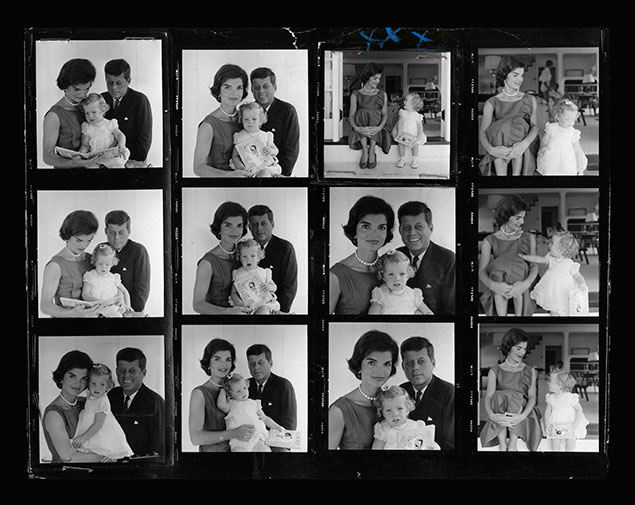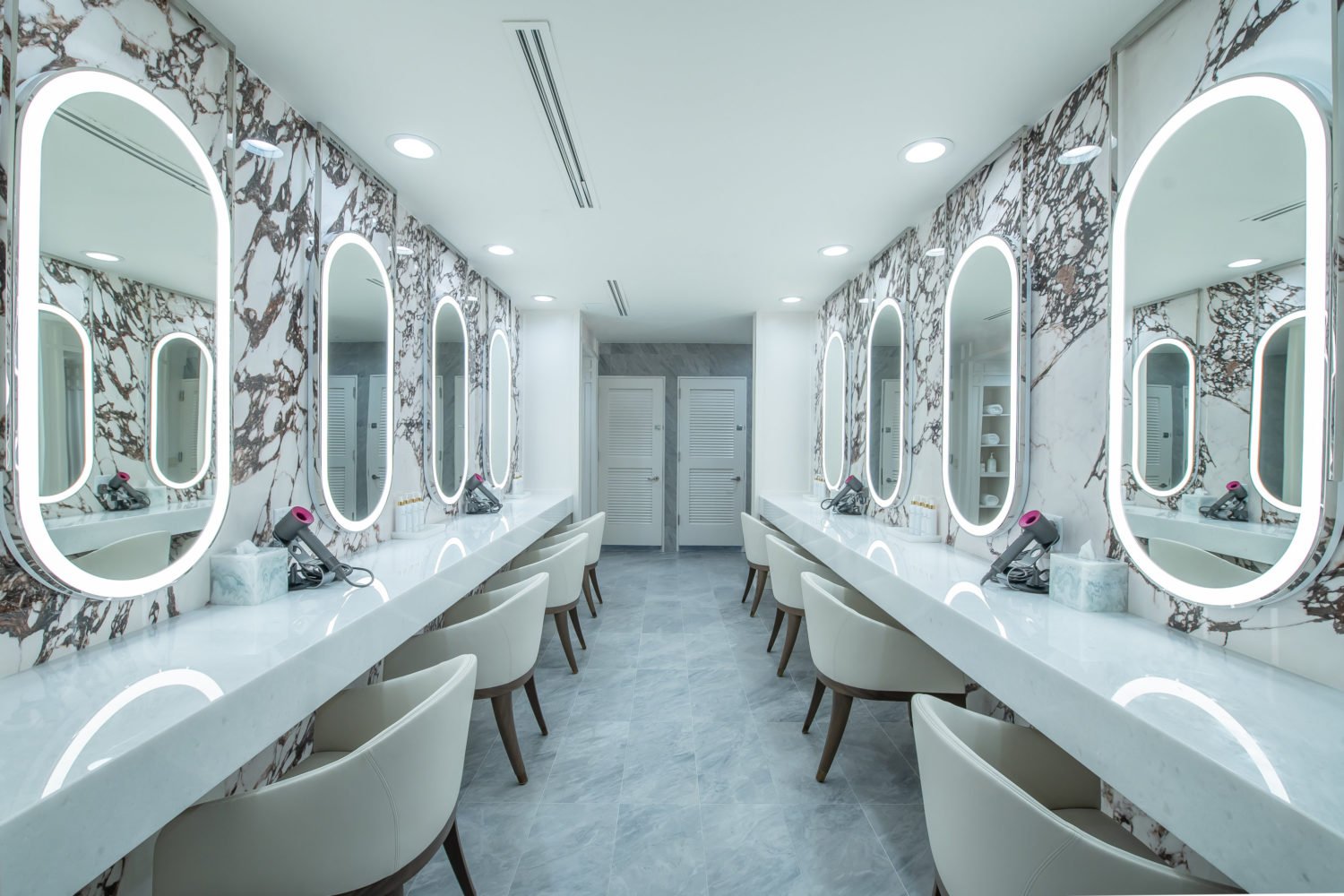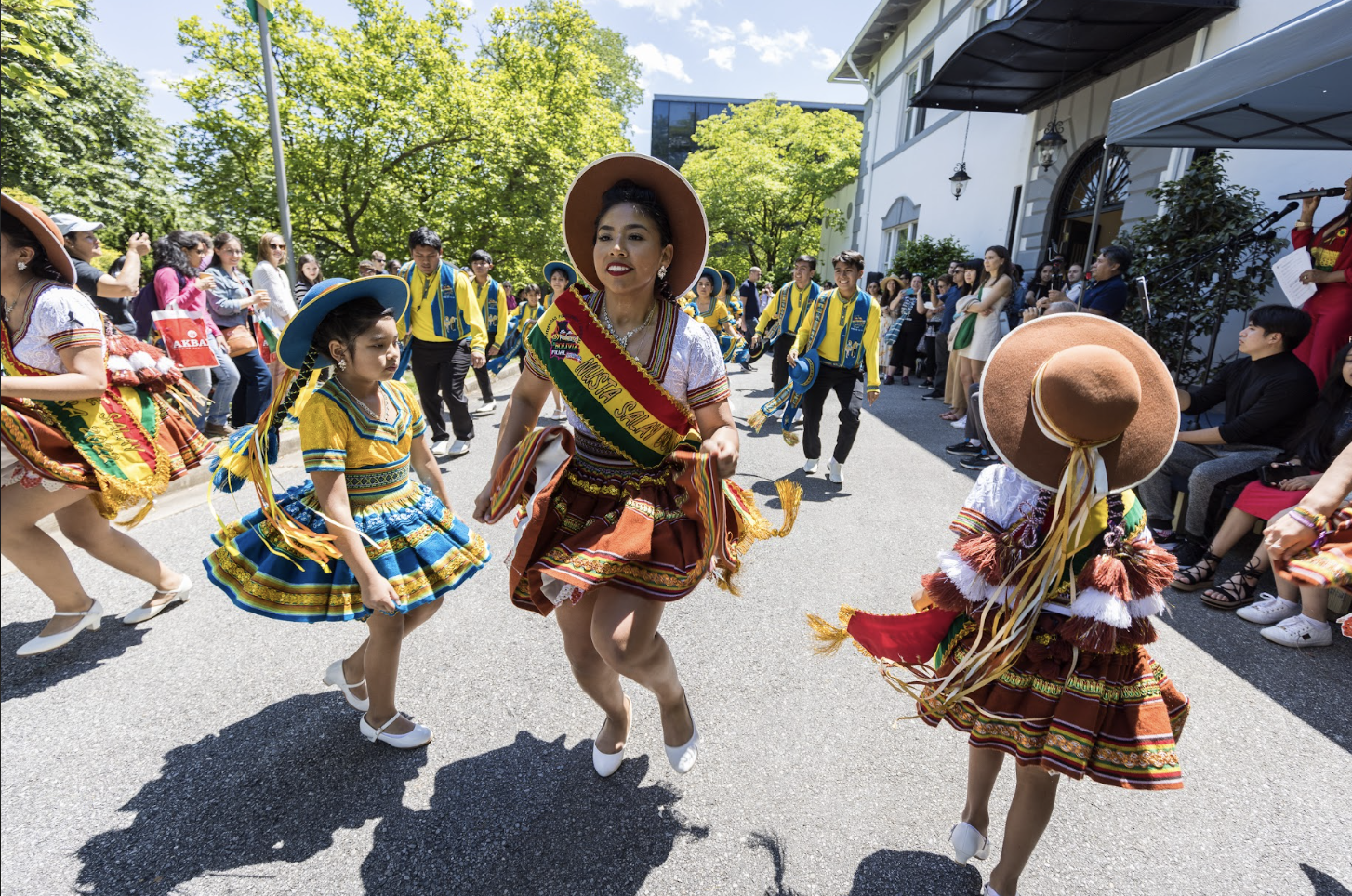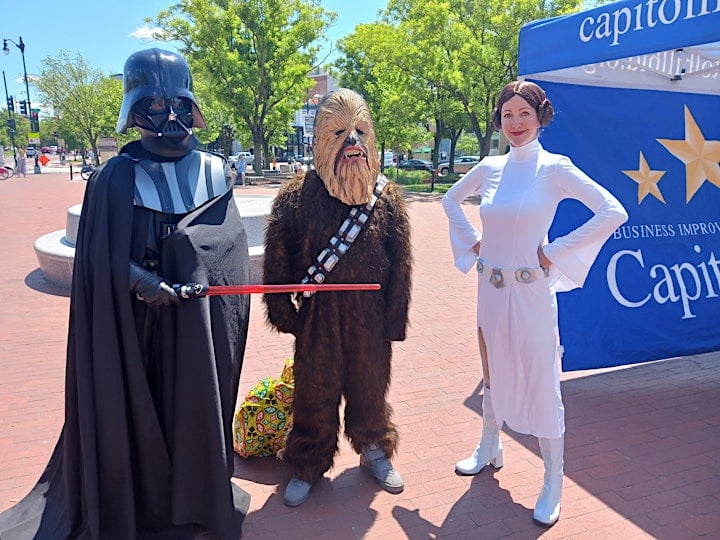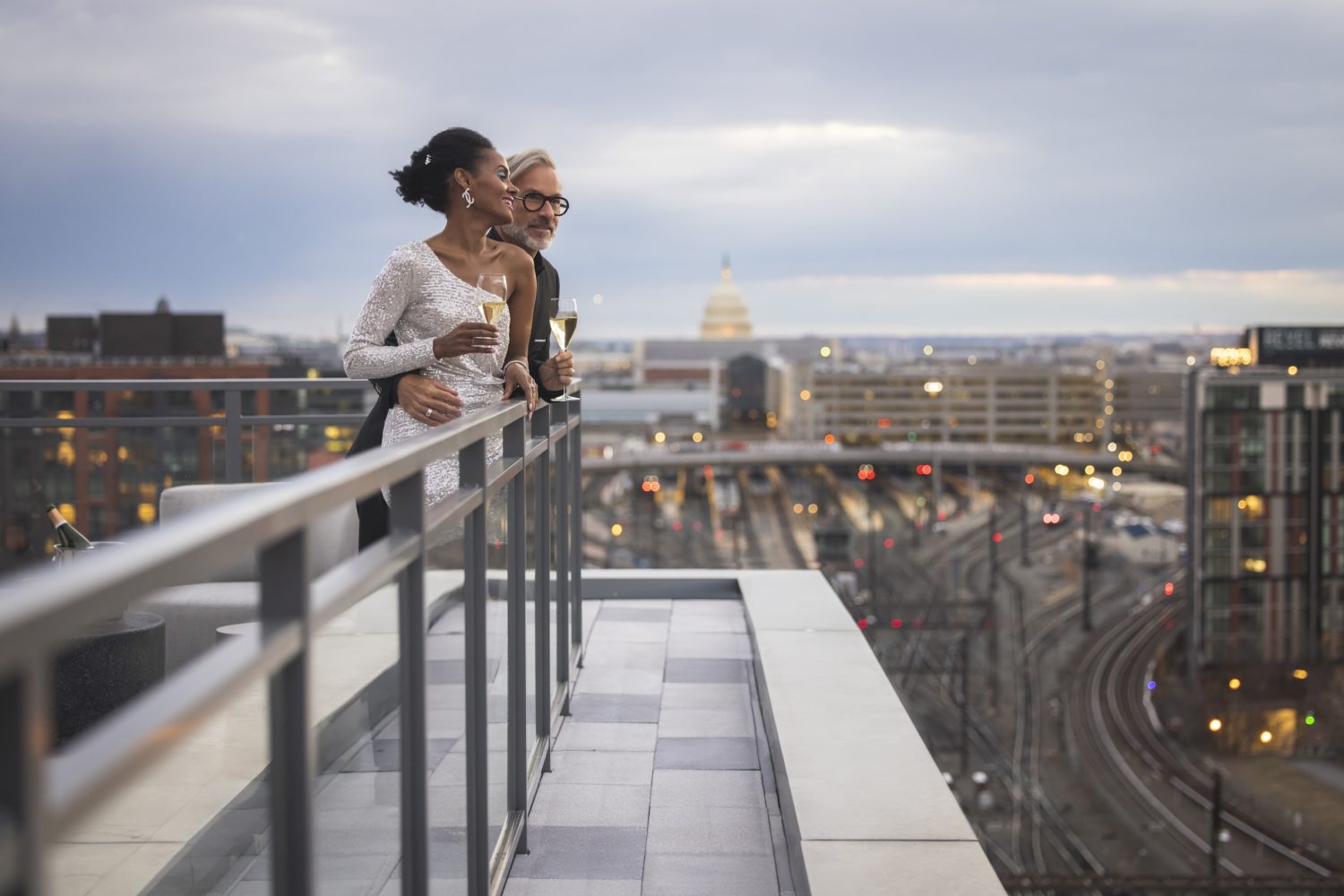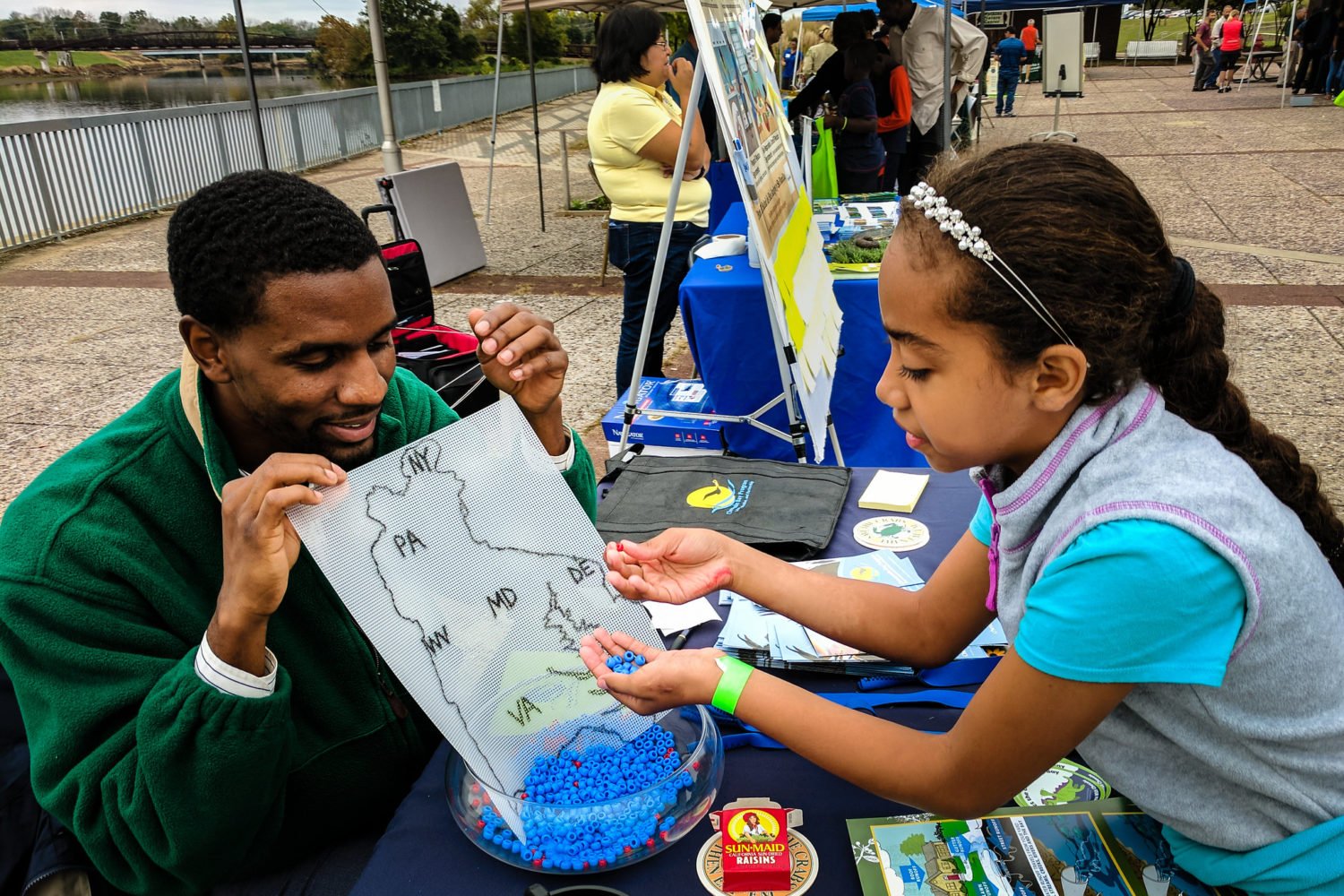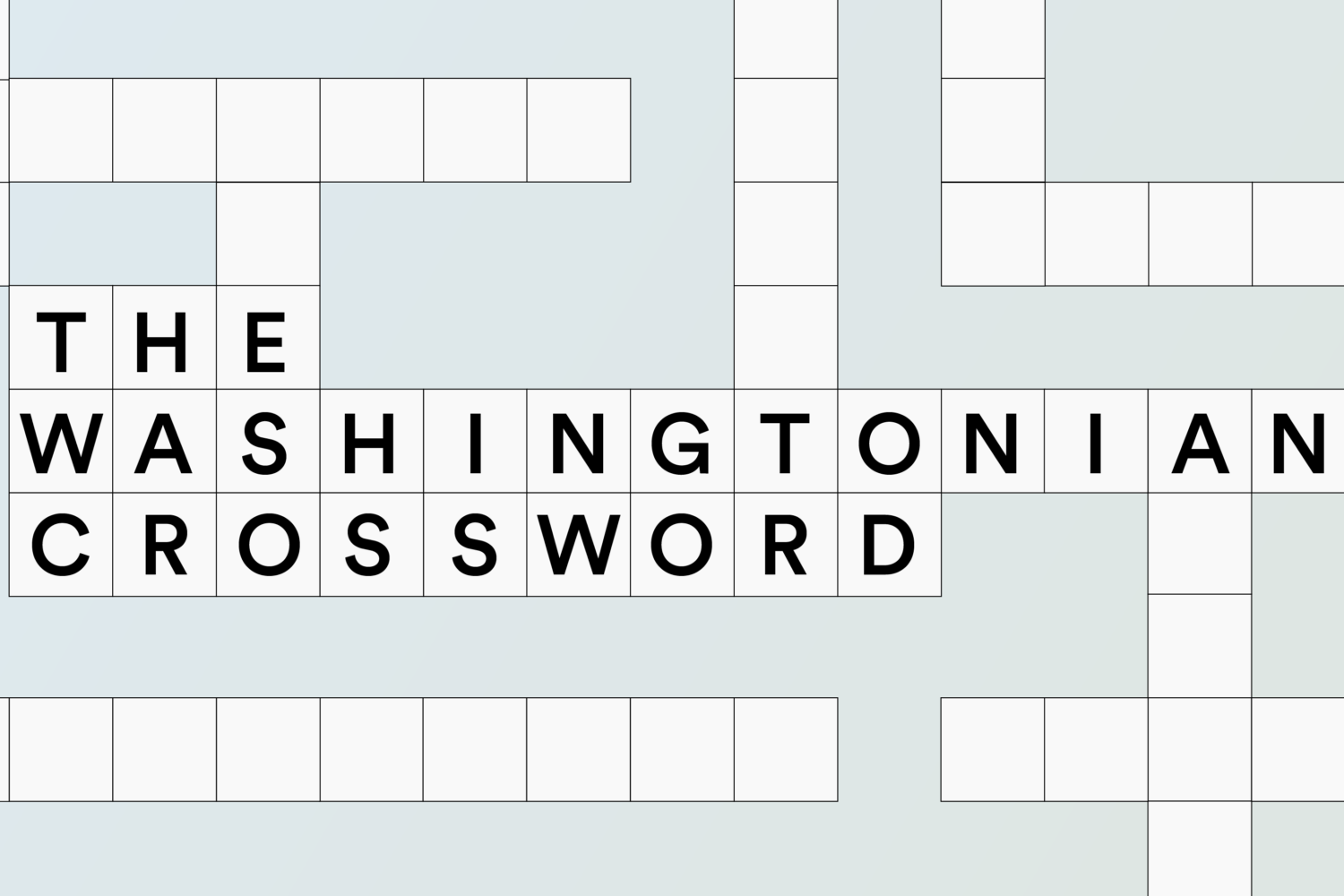So much of
John F. Kennedy’s brief presidency has been immortalized in print, on film, and in interviews that
it’s hard to imagine anything relating to his life and death having the ability to
surprise anymore. Still, “JFK,” a show with three parts now open at the Newseum, offers
glimpses into the 35th president’s life and death that feel both fresh and profoundly
moving.
The two exhibition parts of “JFK” focus on the light and the dark sides of the Camelot
phenomenon. “Creating Camelot,” a show of photographs by the family’s personal photographer
Jacques Lowe, is almost all sunshine, featuring glorious large-scale portraits of
John,
Jackie, and a two-year-old
Caroline Kennedy toddling around the Oval Office. The young president’s mystique is clear, but it’s
Jackie who’s the star, luminous in image after image, whether she’s posing for Lowe
in a yellow-and-white gingham dress or charming
Nikita Khrushchev at an otherwise unsuccessful Cold War summit. But even these photographs have a tragic
history—the negatives, stored in a World Trade Center vault, were all destroyed during
the September 11 terrorist attacks in New York, so the Newseum has restored them from
prints and contact sheets kept in a separate storage space.
“Three Shots Were Fired,” hosted in the Newseum’s sixth-floor exhibition space, focuses
on the assassination of JFK, and it’s a testament to the show’s creators that the
show is both wrenching and fascinating in its extraordinary details. There are important
artifacts, such as the shirt
Lee Harvey Oswald was wearing when he was arrested, and the service revolver carried by the Secret
Service agent who responded first to the shooting, but more interesting are the little
things—the stationery used by Jackie Kennedy to respond to letters of sympathy, and
the first lady’s personal schedule for November 21 and 22, 1963, with her own notes
scrawled in pen. Also remarkable: an ad placed in a Dallas newspaper by an organization
opposed to the president which accuses him of appointing non-Christians to key positions,
having communist sympathies, and having lied to the American people about much of
his personal history. It’s an example that reminds us in a potent way of how conspiracy
theories predated talk radio and e-mail blasts.
The final part of the show is
A Thousand Days, a film produced by the Newseum to explore the short Kennedy presidency, and its
uncanny stamp on the American psyche. As
Walter Cronkite put it toward the end of his news broadcast on the day of JFK’s funeral, “It is said
that the human mind has a greater capacity for remembering the pleasant than the unpleasant.
But today was a day that will live in memory and in grief.” Almost five decades after
the assassination of a young president, documentation of his life and death retains
the ability to educate and to move.
“JFK” is at the Newseum through January 5, 2014. For more information, visit the Newseum’s
website.

